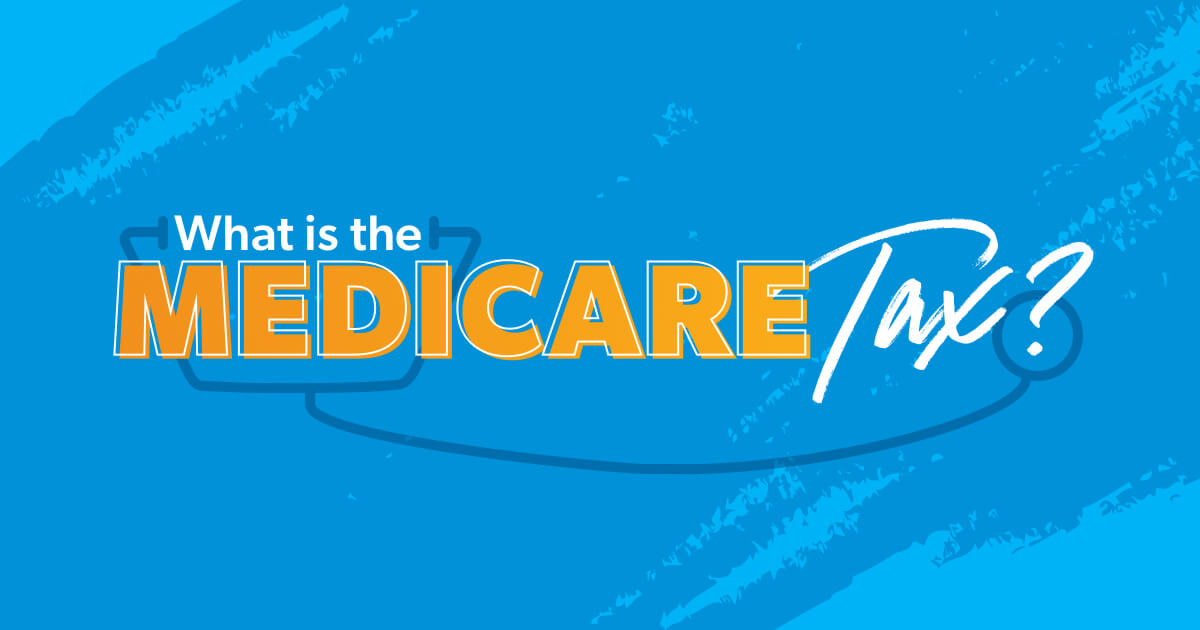Remember in the old days, you know, like 15 years ago, when you received a paper check on payday? Along with your paper check there was a stub that broke down all the taxes and other automatic withdrawals that came out. Of course, all that information still exists today, it’s just online now. And for a lot of folks that means out of sight, out of mind.
But it’s always a smart idea to keep tabs on your money. And one of the main taxes you’ll see taken out of your paycheck is the Medicare tax. Everyone in the U.S. has to pay Medicare tax on their earnings, no matter who you are or who you work for. Let’s take a closer look.
What Is Medicare Tax?
Medicare tax is a payroll tax automatically deducted from your paycheck to fund the federal Medicare health insurance program. If you’re self-employed, you’re not off the hook! You’ll just have to pay the Medicare tax through your quarterly estimated taxes instead.
Get expert money advice to reach your money goals faster!
Medicare was created to help people age 65 and older pay for their health care, as well as younger people with disabilities and people with end-stage renal disease. Taxpayers foot a large chunk of the bill to fund this program. So what’s that mean for your paycheck?
Find a Medicare Plan That Fits You
Get the best plan for your needs and your budget with help from Chapter—the only team of Medicare advisors that's RamseyTrusted!
How Much Is Medicare Tax?
In 2023 and 2024, the Medicare tax rate is 2.9%.1 Of that 2.9%, you’re responsible for half, or 1.45%. The other half is paid by your employer. You might hear Medicare tax referred to as a withholding tax, and that’s because your employer withholds those funds from your paycheck. After your half of the Medicare tax is withheld, both portions are paid to the IRS by your employer.
And if you’re self-employed? Well, you’ll pay the full 2.9% tax rate since you’re both the employer and the employee.
If you make $200,000 or more per year and are a single filer (or if you’re married filing jointly and make more than $250,000 annually), you’ll also pay what’s called the additional Medicare tax.2 That means you’re responsible for an extra 0.9% contribution. And for this one, you’re all on your own. Your employer does not match this additional contribution. But they’ll withhold it from your check and pass it on to the IRS for you . . . so I guess that’s something.
Let’s take a look at an example. Say you’re a single filer making $50,000 per year before taxes. (The Medicare tax is based on gross wages and is withheld from each paycheck.) Over the year, you would pay $725 in Medicare tax (that’s 1.45% of your $50,000 salary).
But say you make $205,000 per year. Now you’re on the hook for the additional Medicare tax of 0.9%. Here’s where you have to pay close attention. You’ll be taxed 1.45% on the first $200,000 and then 2.35% (that’s 1.45% + 0.9%) on the remaining $5,000. So that means in total, you’ll pay $3,017.50 ($2,900 in regular Medicare tax plus $117.50 in additional Medicare tax) for the year.
There are no contribution limits on Medicare tax. So, the more you make, the more you pay.
What Is Considered Taxable Income for Medicare Tax?
More than just your salary is considered taxable. Here are some other forms of compensation to keep in mind:
- Wages
- Tips
- Commissions
- Bonuses
- Overtime
- Fringe benefits like paid personal time off or a business vehicle you use outside of work3
So just remember that all of those sources of income will be subject to any Medicare taxes you owe!
What Is FICA Tax?
Medicare tax falls under a larger payroll tax called the Federal Insurance Contributions Act (FICA) tax. So those automatic deductions from your paycheck for Medicare, along with the Social Security tax, make up the FICA tax.
Just like your Medicare taxes, Social Security taxes are based on gross earnings (that’s your income before taxes), and you and your employer will split the total contribution down the middle. While the Medicare tax is 1.45% for each of you, the Social Security tax is 6.2% apiece (just up to the first $160,200 you earn in 2023 and $168,600 in 2024).4
That brings your total FICA tax to 7.65%. And, of course, if you cross any of those high-dollar income thresholds, add 0.9% for additional Medicare tax. Here’s what this looks like.
2023 and 2024 FICA Tax Rates
|
|
You (Employee) |
Them (Employer) |
|
Medicare tax |
1.45% |
1.45% |
|
Social Security tax |
6.2% (on the first $160,200 in 2023 and first $168,600 in 2024) |
6.2% (on the first $160,200 in 2023 and first $168,600 in 2024) |
|
Total |
7.65% |
7.65% |
|
Additional Medicare tax |
0.09% (for single filers making $200,000+; for joint filers making $250,000+) |
|
Self-employed people, here it is again: Since you’re both employer and employee, your FICA tax is 15.3%. I know, it hurts. But the employer portion of the self-employment tax (which covers FICA taxes) is deductible.5
What Is the Net Investment Income Tax (NIIT)?
Beyond your payroll withholdings and possibly the additional Medicare tax, there’s one other way you could end up paying Medicare tax. And this one has to do with investments.
The net investment income tax (NIIT), like the additional Medicare tax, is basically an extra tax for high earners. The NIIT tax takes your investment income—which includes dividends, interest, passive income, annuities, royalties and capital gains—and applies the 3.8% NIIT tax to it.6
This particular Medicare tax looks at investment income and your modified adjusted gross income (MAGI). Your MAGI is your household adjusted gross income plus tax-exempt interest income and certain deductions added back in—so, your gross income, but modified. If you’re a single filer making $200,000 or more, or a joint filer earning $250,000 or more, then you might have to pay the NIIT.
Depending on your income, and the sources of your income, it’s possible to owe both the additional Medicare tax and the NIIT. That’s because the additional Medicare tax applies to your wages and other forms of compensation, and the NIIT applies to your investment income.
A Better Way to Take Care of Your Money
If you feel like you’re getting taxed coming and going and aren’t sure it all adds up, then get with one of our trusted tax professionals. All of our RamseyTrusted tax advisors have been vetted by our team and can walk you through any tax question you have. Find a tax advisor who serves your area today!
If you’re confident you can handle your own taxes and just want easy-to-use tax software, check out Ramsey SmartTax—we make filing your taxes easy and affordable.
Or if that NIIT has left you scratching your head about taxes you might owe on your investments, connect with one of our SmartVestor Pros!




